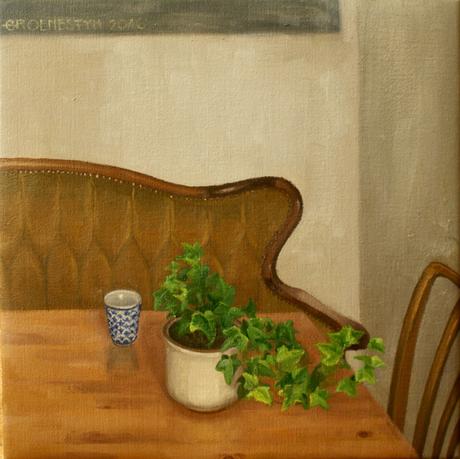
Morgens / Mornings © Samantha Groenestyn (oil on linen)
I have begun to teach drawing. It’s a dizzying experience: a job for which I have full responsibility—in the content, the delivery, the managing of people, organisation, physical premises, money and the division of time. It’s a careful balance to pull everything together. I am a performer, I set the tone. It’s humbling to see people trust my guidance, trust in what I do. I see, plötzlich, how my own teachers felt falsely idolised when they knew the limitations of their own work. But I also see a logical way to lay out the learnings I have gathered from many places over several years, a systematic way to present them to others, to share the discoveries that blew my mind.
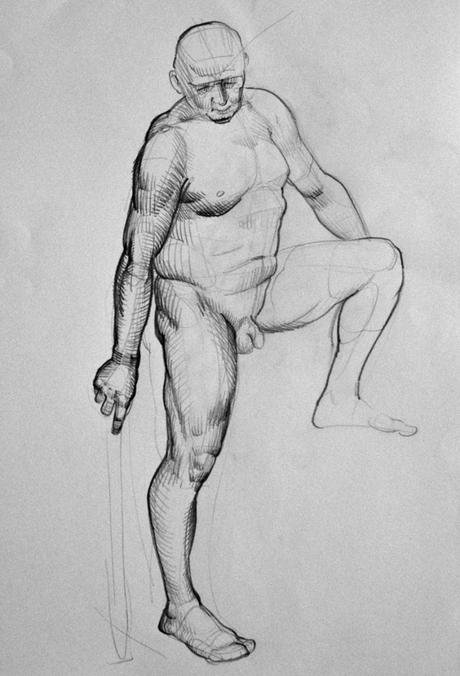
And what is it that we teach? When I think over my own artistic education, all its variegations and approximations, all the extended drawings and prolonged investigation, all the gentle praise and gentle corrections, all the forceful criticisms and all the times someone else took my pencil and violated my page—I would have to agree with Wittgenstein about the importance of experience. Artists are constantly making judgements, and cementing them in material form. Some judge better than others, because their knowledge is deeper. And this, like the knowledge that enables one to judge ‘the genuineness of expressions of feelings,’ is certainly learned, but not ‘by taking a course in it, but through experience’ (Wittgenstein, 1953: 227).
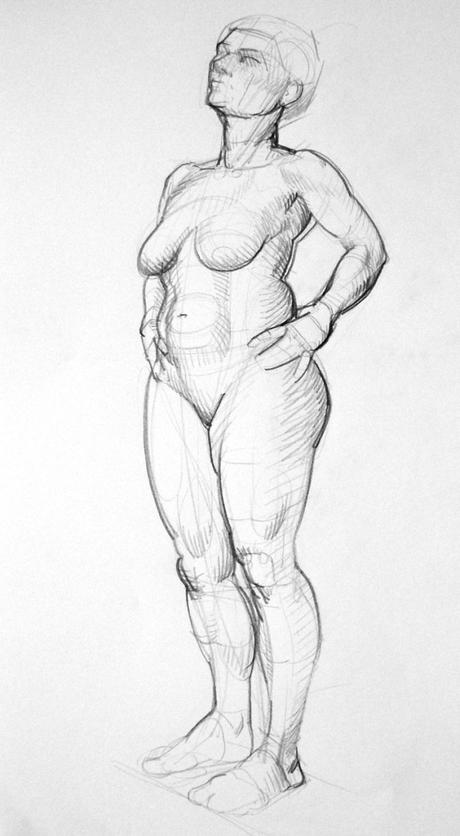
Drawing is ultimately about making judgements, and I firmly believe that you can make intelligent ones if you have reasons behind the judgements you make. My driving instructor used to say, ‘Driving is only a little bit about knowing how to operate a car. Driving is mostly about making decisions, and I can only show you how to begin to make those decisions for yourself.’ An experienced draughtsman draws on years of accumulated knowledge when he decisively puts a line down. The trouble is that this knowledge cannot be transmitted through words alone, even if it can be explained. Intellectual understanding of properties of prisms and spheres and cylinders, of perspective and anatomy, is not enough to be able to draw: you must constantly use this understanding, for drawing is an act. Only once your intellect and your motor skills align can you be said to have acquired this particular knowledge, and it is experience that marries the two.
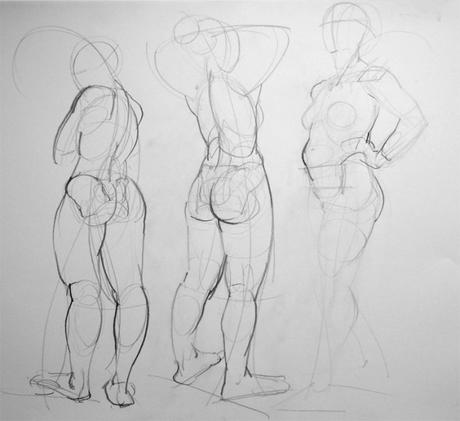
‘Can someone else be a man’s teacher in this?’ asks Wittgenstein (1953: 227). How does one go about transmitting this knowledge, about conveying these sublte things that one has collected over the years from many sources, from countless painstaking investigations? How is it that I can be so bold as to offer a course in drawing? Things that I know by sight are difficult to put into words; anatomical names fall away as I silently use the visual knowledge rather than speak about it. I hold tin cans and boxes at exaggerated angles and grasp clumsily at words to express something about an elusive three-dimensional rhythm through space, trying to aruge that we can transcend reality and, through art, inject even more life into life itself—wait, what? I slow down: I can isolate tasks, and focus my students on one idea, and thus wrap their shaky hands around a steady tool, but their minds are more active than their wrists. Wittgenstein (1953: 227) remains hopeful about teaching one to recognise the genuineness of expressions of feelings, and I too remain hopeful about passing on the ability to draw:
‘Can someone else be a man’s teacher in this? Certainly. From time to time he gives him the right tip.—This is what ‘learning’ [Lernen] and ‘teaching’ [Lehren] are like here.—What one acquires here is not a technique; one learns correct judgements. There are also rules, but they do not form a system, and only experienced people can apply them right.’
So much is cast into the ether, so much grain scattered in the hope that one or two seeds will germinate in a fertile mind. I try to rain down tips on my students, carefully hung together tips, carefully organised and logically arranged, but I know that most will scatter like seeds and few will take root. Successful teaching, successful learning, demands the improbably fortunate meeting of a knowledgeable mind with a humble, hungry one, and even then most of the substance is lost, washing over the over-tasked student, who can actually only learn through active, sustained and repeated doing. The key is patient repetition, and providing a guided space in which to gain experience, gently corrected experience. I make my students draw as much as possible. All my clever explanations will come to nothing if they cannot discover the truths themselves through the very doing.
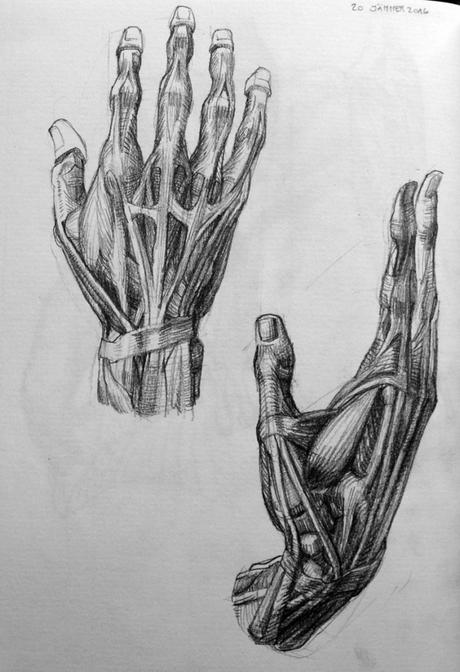
Copies after Bammes
Besides smoothing the path and attempting to remove discouraging obstacles, besides dropping tips like crumbs, the best I can hope to transmit to my students is a love of drawing and for drawings. If I can invite them a little way into my private sphere where drawings and paintings work their intoxicating magic on me, I can bring them to the best teacher of all. For living in art is the firmest way to grow one’s experience; filling one’s head with it such that one’s hand can’t hold still, but itches to mimic those curves and to reproduce those shapes and in doing so to imprint the physical knowledge in one’s own body. As Rilke (2006 [1903]: 21) once urged a young poet, on recommending him his most treasured and life-changing books:
‘Leben Sie eine Weile in diesen Büchern, lernen Sie davon, was Ihnen lernenswert scheint, aber vor allem lieben Sie sie.’
‘Live a while in these books, learn from them what seems to you worth learning, but above all: love them.’ I will do my best to impart knowledge to my students, but more than this, I will encourage them to slowly, steadily, concentratedly build their experience, and most of all, I will try to show them what it is to love drawing. And I can only hope that tentatively inviting others into my private mental space will strengthen my own judgements and help me to stand by them with even greater conviction.
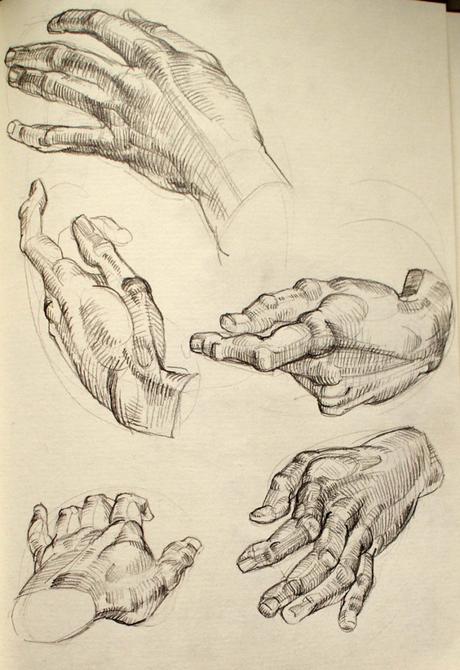
Copies after Bammes
Rilke, Rainer Maria. 2006. Briefe an einen jungen Dichter / Briefe an eine junge Frau. Diogenes: Zürich.
Wittgenstein, Ludwig. 1953. Philosophische Untersuchungen / Philosophical Investigations. Trans. G. E. M. Anscombe. Basil Blackwell: Oxford.
Details about my classes are on my website.

